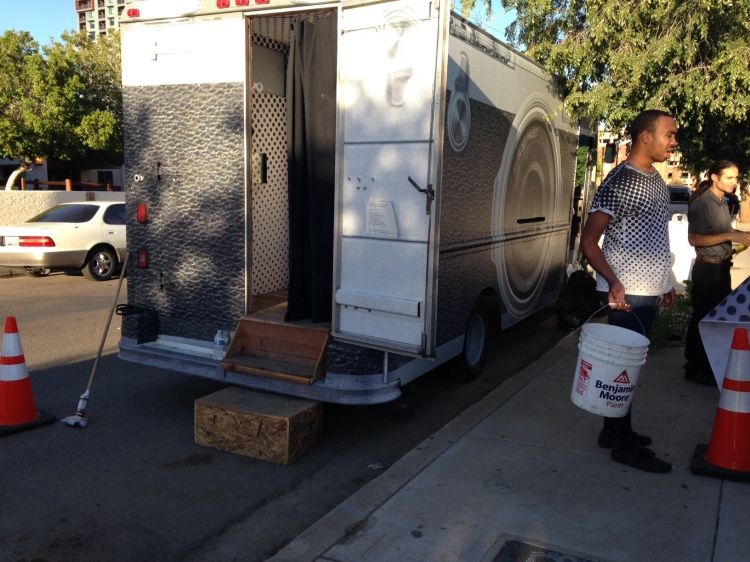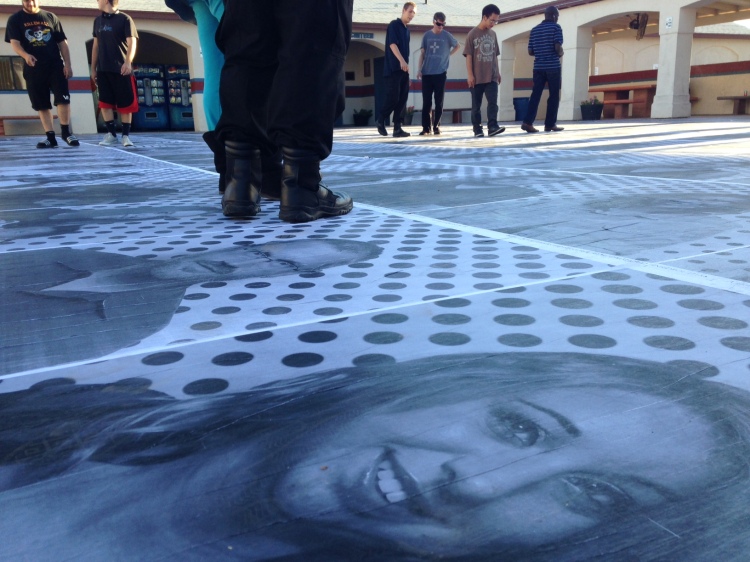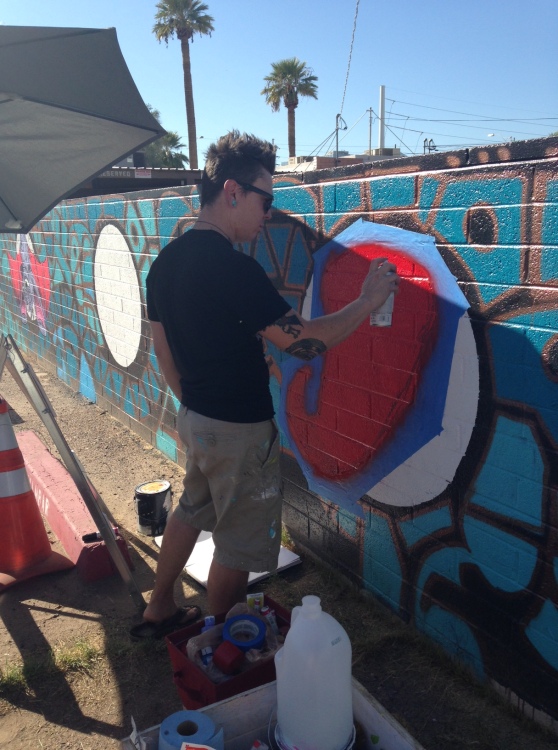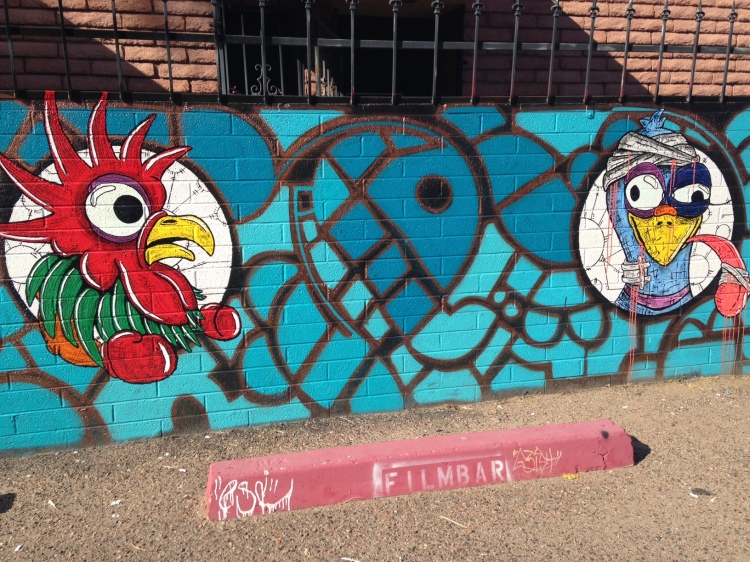October 6, 2013
Vendors, performances, adoptable pets, and children’s activities crowded the street outside the Herberger Theater Center Saturday afternoon for the theater’s annual Festival of the Arts.
A family event that began as a way to showcase the theater after renovations that finished in 2010, this year’s festival was the theater’s fourth, according to Laurene Austin, the director of development and marketing and organizer for the event.
“It was such a big hit the first year, and every year it’s grown,” said Austin.
Before the first festival, the Herberger Theater was closed for two summers for renovations funded by a city approved bond, according to Austin. They wanted to open the theater back up with a huge event.
“What’s something really cool that we can do that really brings the arts together under one roof?” said Austin, remembering the first event. “So we thought, let’s have a festival.”
Herberger Theater worked with 25 Valley art groups that came to the event and performed. The festival gives people the opportunity to sample the arts, she said. The festival featured performances every 20 minutes on four different stages—one of which was outside—in addition to a pet adoption area and children’s activities.
“My favorite part is really working with all the different groups that I don’t get to work with throughout the year,” said Austin. “It’s so much fun to be able to work with all these kids’ organizations and pet groups and to really find a way that we can bring them together—and it actually flows, which is the really exciting part.”
People generally don’t think about seeing a show and then adopting a dog, but the combination has worked out well, she said.
“The timing is also really good because this is the official start of the arts season now,” said Austin. “So it gives the art groups an opportunity to promote their season—show people what they have coming up.”
Nearly 100 volunteers were recruited to make the event possible, she said. And they helped with the outdoor festival and the backstage area, handling much of the behind-the-scenes work on the day of the festival.
One volunteer stood on the outdoor stage in a pirate outfit, emceeing the event. Jim Aiken works in the independent film industry but started volunteering as an emcee for many of Herberger’s events a few years ago, he said. He loves volunteering at the event.
“It’s fun, the kids love it,” said Aiken. “It does expose a lot of people that maybe don’t live in the area down here to what’s going on in the downtown Phoenix area.”
Poranguí Carvalho McGrew, a Brazilian musician who performed the opening act for the outdoor stage said that he liked being involved with the theater and the festival. Phoenix can be a desert symbolically and culturally, according to McGrew.
“For me as an artist, I love events that make that effort to kind of create and make use and take back public space,” said McGrew. “It’s not just trying to sell you a Starbucks coffee.”
Events like the Festival of the Arts are important because they take up a street and stop traffic, actually making people get outside, he said. His mission as an artist is to help create a cultural hub in downtown Phoenix, and the Festival of the Arts is an event that helps.
“I think it’s a beautiful event,” said McGrew. “Phoenix can kind of lose its sense of a central cultural hub that most big cities in the U.S. have – Phoenix is still kind of in that way very much adolescent.”
The Festival of the Arts was sponsored by Arizona Public Services. The Herberger Theater is a nonprofit organization, and the money raised by the event will go toward their three outreach programs for children that serve children ages 3-19, according to Austin.
“It’s such a great partnership, I think, between us and all these other organizations,” said Austin. “I think it’s a win-win for everyone involved.”




